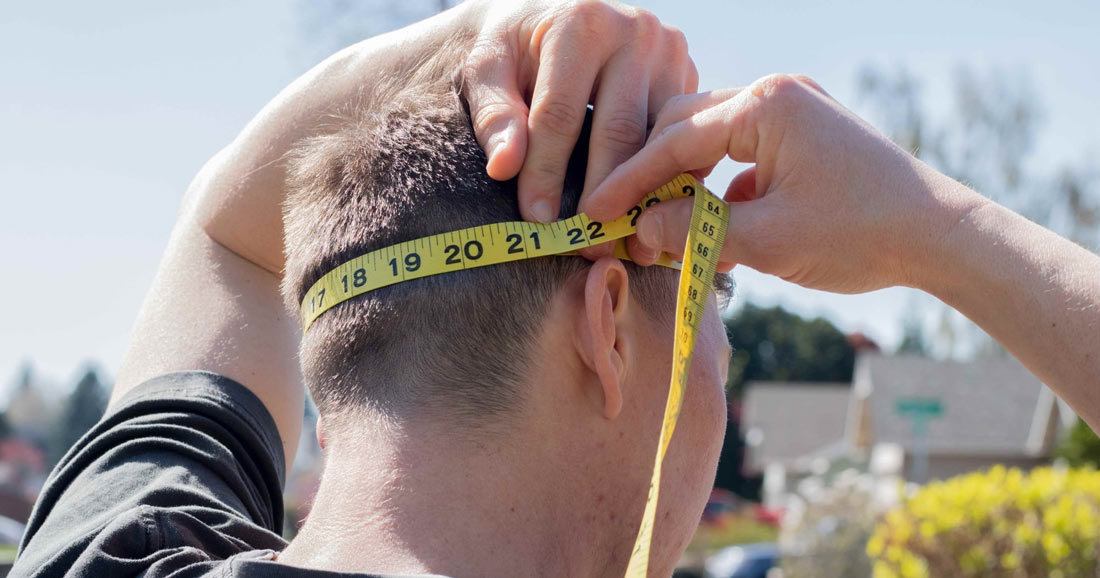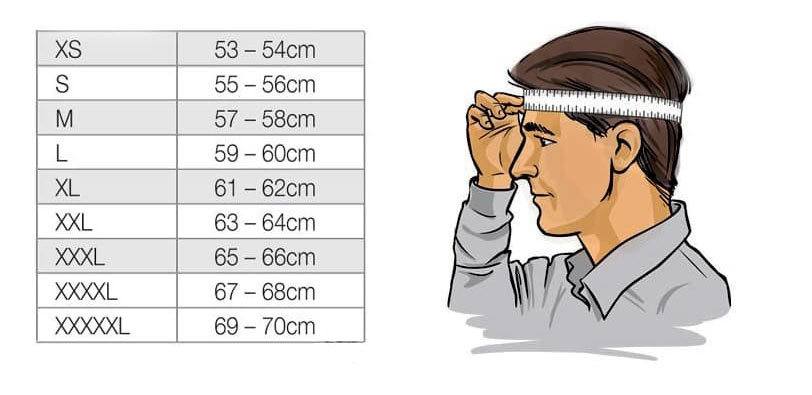Ensuring a properly fitting helmet is paramount for safety and comfort while engaging in various activities such as biking, motorcycling, or playing certain sports. Understanding how to measure helmet size is the first step in securing the right protection for your head. An ill-fitting helmet can compromise its effectiveness in safeguarding against potential injuries.
In this guide, we will explore the essential steps and techniques to measure your helmet size accurately. From understanding the key measurements of your head to selecting the appropriate helmet style, these insights will empower you to make an informed decision when choosing headgear. Whether you’re a seasoned rider or a newcomer to helmet-wearing activities, this guide will provide valuable insights to ensure your helmet not only meets safety standards but also provides a snug and comfortable fit tailored to the unique dimensions of your head.
Steps of Choosing the Right Helmet

1. Choose a Helmet Style
In choosing your right helmet, you have to decide the style of MOTORCYCLE HELMET COVER. There are different types of headgear, depending on your choice, like:
- Full Face
- Open-face Helmets
- Half Shell
- Dual Sport Helmet
- Modular Helmet
2. Determine your Head Shape and Size
The shape and size of your head is an excellent determinant of the helmet you can get.
For head shape: Most helmets are designed to fit the shape of different heads from long oval, intermediate oval, or round oval. The oval-shaped head, when viewed, is longer from the front to the back than its length when seen from ear to ear. The intermediate oval shape is a little longer from the front to the rear than from side to side. Most helmets fall into this category. Lastly is the round and oval shape. This head shape is categorized by a moderate distance from the front to the back view as well as from side to side.
Head size: The head size can be determined using a measuring tape to measure the fullest part of the head.
3. Try on the Helmets
Place the helmet on your head, and check if it fits correctly or if it doesn’t. The helmet should feel a bit tight as it goes over your head.
4. Check for proper fit
You have to keep trying on several helmets until you get the right one. A perfect headgear will wrap firmly to your skull and drag on your cheek a little. Also, it should rest evenly on the eye-port edge a little above the eyebrows with a good view of the sides. However, no part of the helmet should punch in your skull. Please, avoid very tight helmets as they can result in headaches.
5. Wear the helmet for about half an hour
Don’t be too quick to remove the helmet after believing it to be the right fit. Wear it for about half an hour to see if it hurts. If it does, consider how uncomfortable it will become in an hour or more. So, get a more comfortable one.
6. Still, feels right?
If your helmets feel right, without any pain, after thirty minutes of waiting, then go ahead and purchase them.
How to Measure Helmet Size
Measuring the size of a helmet can be quite tasking. Here are a few steps to help you estimate your helmet size.
Step 1: Measuring your Head’s Circumference

To measure your head circumference, wrap the measuring tape over your head, the part just a little above your ear and your eyebrow. Also, measure along your forehead. For accuracy, ask someone to help you measure.
Step 2: Trying on a Helmet

When trying on the helmet, make sure that there are no points that are causing you pain. There should be no part that is piercing your skull, and at the same time, the helmet should not move freely when wearing. In other words, it shouldn’t be able to move around. Also, the headgear should be fitted in such a way that the upper edge is above your eyebrow, and you have a clear vision of both sides.
Step 3: Checking Before Use
To confirm your helmet before use, place a finger between your head and the inside of the helmet. If it fits comfortably, then go for a smaller size helmet.
The Dangers of a Big Helmet
Wearing a helmet is paramount for personal safety, but the dangers of opting for a size that is too large cannot be overstated. A big helmet compromises its primary purpose, leaving the wearer exposed to potential risks. Firstly, a loose-fitting helmet is more prone to shifting during impact, diminishing its ability to absorb and distribute the force effectively. This increases the likelihood of head injuries in the event of a crash or fall. Additionally, a large helmet may obstruct the wearer’s vision, impairing their ability to navigate and react swiftly in dynamic situations.
Furthermore, a loose helmet may not provide adequate coverage to crucial areas of the head, leaving vulnerable regions exposed to injury. It can also lead to discomfort, causing distractions that may impact concentration during activities like biking or motorcycling. Ultimately, choosing the right-sized helmet is essential for optimizing protection. Regularly inspecting and adjusting the helmet to accommodate changes in hairstyle or head size is crucial to ensure a secure fit and mitigate the inherent dangers associated with wearing an oversized helmet.
Common Problems
The most common problems associated with acquiring a helmet are:
1. Too tight: Having a very tight helmet will result in headaches. Being too close means it has too much pressure on the head and skull
2. Lack of hearing: After wearing some helmets, there have been records of limited hearing ability. However, it is always recommended to use earplugs.
3. Obscure Visions: During rain, most helmets give obscure vision because the visor gets condensed with rain droplets.
Frequently Asked Questions (FAQs)
Does wearing a helmet cause neck breakage?
No. Wearing a helmet is meant to provide complete protection of your neck from injuries. However, during accidents, instead of hurting yourself, the helmet bears the impact of any fall or accident.
What is the right type of Helmets to wear?
It depends on Individual choice. However, open helmets are preferable because of their lightweight and visibility.
How do I know my helmet fits perfectly?
A correctly fitted helmet will move as you move your skin. Also, it will be challenging to put your hands into space between the headgear and your skin.
What are the dangers of a big helmet?
Wearing a big helmet is very dangerous as any accident will result in many impacts on your head. However, smaller size helmets are best as they can increase with time. If your helmet is getting bigger, you can wear a do-rag, bandana, or any material that can help it fit perfectly.
Conclusion
mastering the art of measuring helmet size is a crucial skill for anyone prioritizing safety during various activities. A well-fitted helmet is your first line of defense against potential head injuries. By understanding the nuances of measuring head circumference, considering helmet styles, and factoring in comfort, you empower yourself to make informed choices. Remember, a helmet that fits correctly not only meets safety standards but enhances your overall experience, ensuring you can focus on the thrill of your adventure or sport without compromising safety. Regularly check and reassess your helmet size as factors like hairstyle changes or growth may influence the fit over time. With the right helmet size, you embark on your activities with confidence, knowing you’ve taken a proactive step towards safeguarding your well-being.
